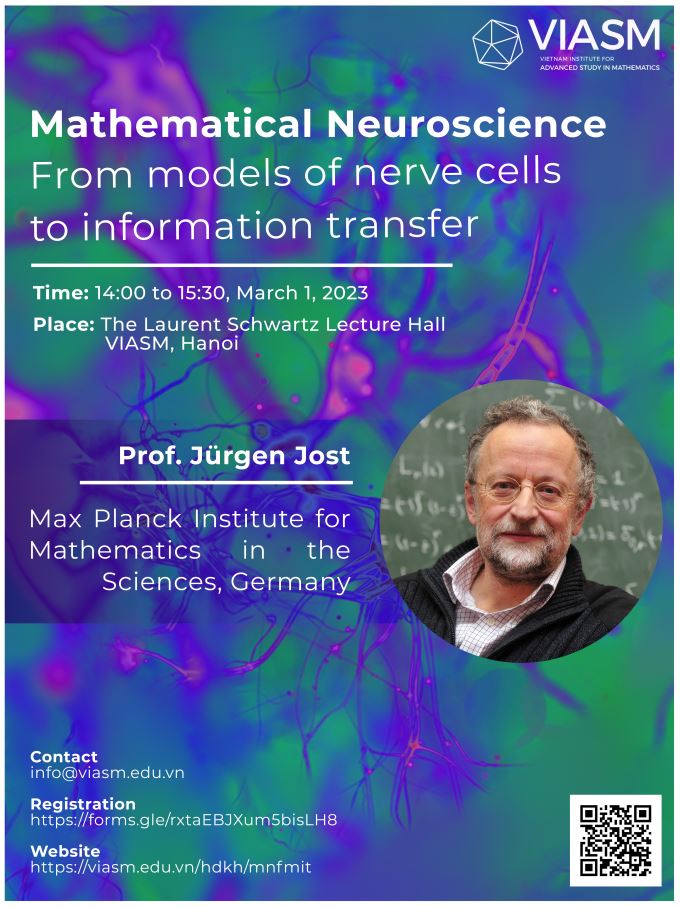Bài giảng đại chúng: Mathematical Neuroscience: From models of nerve cells to information transfer

Time: 14:00 to 15:30 Ngày 01/03/2023
Venue/Location: Viện Nghiên cứu cao cấp về Toán, 157 phố Chùa Láng, phường Láng Thượng, quận Đống Đa, Hà Nội.
Speaker: Prof. Jürgen Jost, Max Planck Institute for Mathematics in the Sciences, Leipzig, Germany
Prof. Jürgen Jost has been Director and permanent member of Max Planck Institute for Mathematics in the Sciences, Leipzig, Germany since 1996, and honorary professor of University of Leipzig since 1998. He is also an external professor of Santa Fe Institute for the Science of Complexity in the USA and a member of the German National Academy Leopoldina, the Academy of Sciences and Literature at Mainz and the Saxonian Academy of Sciences. Prof. Jost served on the Editorial boards of Math. Zeitschrift, Journal of the European Mathematical Society (Editor-in-Chief) and Appl. Math. Research eXpress. Currently, he serves on the Editorial boards of Calculus of Variations, Theory in Biosciences (Editor-in-Chief), Communications in Mathematics and Statistics, Information Geometry, Vietnam Journal of Mathematics. He is also the founding and managing editor of several scientific monographs: Ergebnisse der Mathematik (Springer), Klassische Texte der Wissenschaft (Springer), Classic Texts in the Sciences (Birkhäuser), Wissenschaft und Philosophie /Science and Philosophy/Sciences et Philosophie, Mathematics of Data, starting in 2022 (Springer). Prof. Jost received the Gottfried Wilhelm Leibniz Prize of the DFG (German Research Society) in 1993. He won major research grants including the ERC Advanced Grant VARIOGEO in 2010-2016 for the geometric calculus of variations and its Applications. His publications include more than 20 monographs (many of them with multiple editions) and about 500 scientific papers.
Abstract:
I shall give a survey of mathematical neuroscience, Neurons fire and thereby convert their input into digital pulses. When we want to describe this process mathematically, we find subtle dynamical and stochastic phenomena. And when we want to understand the function of this process, we need to develop and apply tools from information theory. And since neurons are synaptically coupled to others, we see collective phenomena on short and long time scales. This is what seems to underlie our cognition.
Contact: info@viasm.edu.vn

